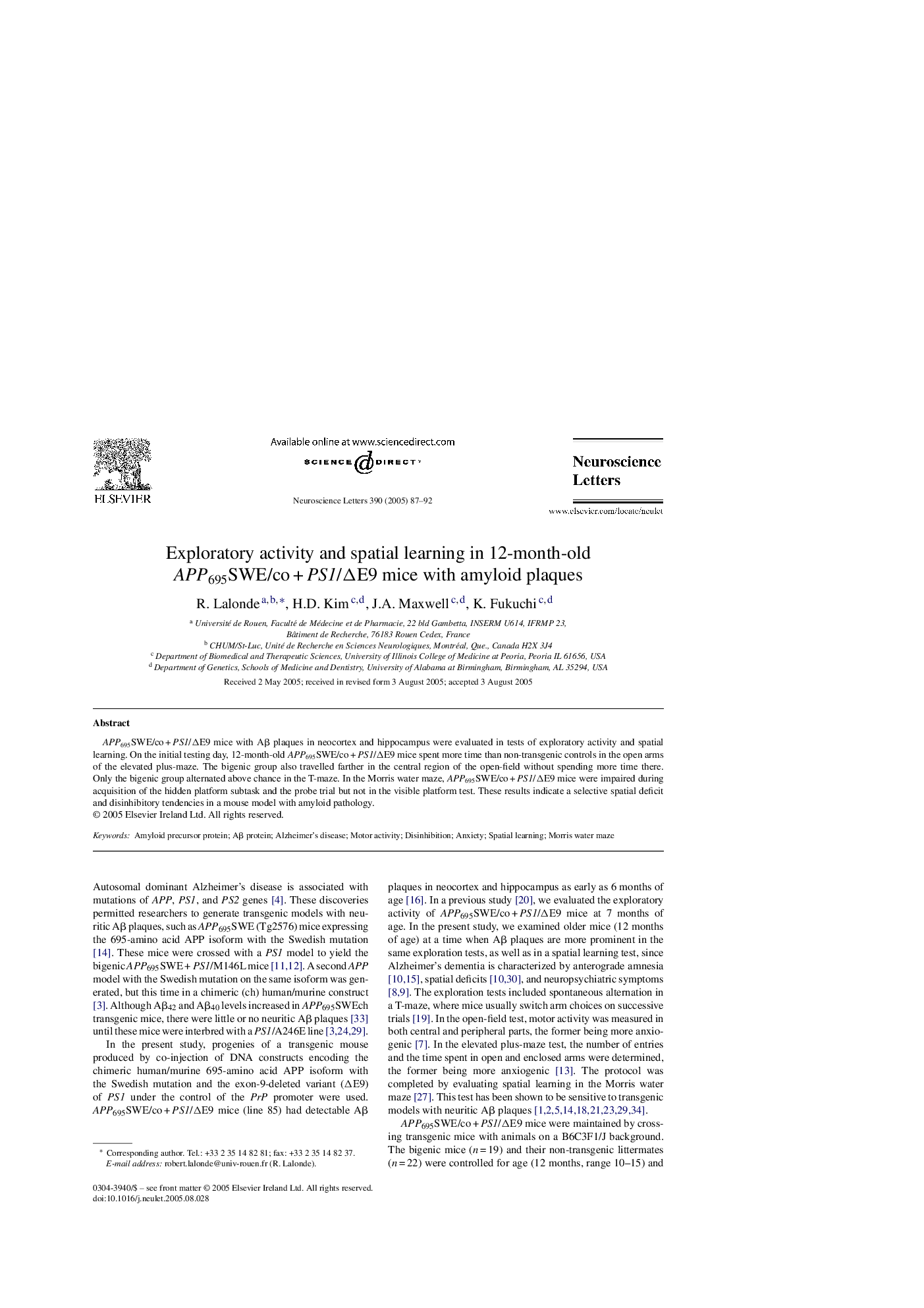| Article ID | Journal | Published Year | Pages | File Type |
|---|---|---|---|---|
| 9428890 | Neuroscience Letters | 2005 | 6 Pages |
Abstract
APP695SWE/co + PS1/ÎE9 mice with Aβ plaques in neocortex and hippocampus were evaluated in tests of exploratory activity and spatial learning. On the initial testing day, 12-month-old APP695SWE/co + PS1/ÎE9 mice spent more time than non-transgenic controls in the open arms of the elevated plus-maze. The bigenic group also travelled farther in the central region of the open-field without spending more time there. Only the bigenic group alternated above chance in the T-maze. In the Morris water maze, APP695SWE/co + PS1/ÎE9 mice were impaired during acquisition of the hidden platform subtask and the probe trial but not in the visible platform test. These results indicate a selective spatial deficit and disinhibitory tendencies in a mouse model with amyloid pathology.
Keywords
Related Topics
Life Sciences
Neuroscience
Neuroscience (General)
Authors
R. Lalonde, H.D. Kim, J.A. Maxwell, K. Fukuchi,
